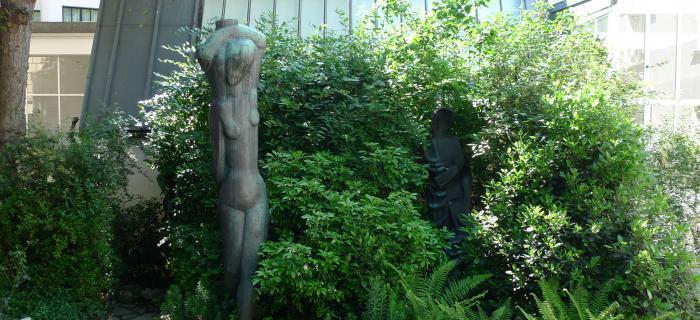DÉCOUVREZ LES 14 MUSÉES DE LA VILLE DE PARIS
Main menu

A number of bronzes presented in this open space, the beating heart of the museum which brings it to life with the rhythm of the seasons, are in the Neoclassical style. This style was adopted by Zadkine at the beginning of the 1930s, the time of his journey to Greece, and became even more evident during his exile in the United States. It is expressed through a taste for mythological subjects and certain formal elements borrowed from classical antiquity combined with Cubist references, such as the play on concave and convex forms (The Birth of Venus, Melancholy, Orpheus, The Poetess or Monument for a Garden).
The Project for a Monument to Apollinaire, immediately to the left of the exit, is representative of this style. It is one of the four projected monuments which Zadkine designed at the end of the 1930s and which he exhibited in Paris in 1939 dedicated to the poets which he admired. The two bronzes presented at the base of the large sycamores (Orpheus, Torso of the Destroyed City), occupy the position favoured by Zadkine. Erected in the port of Rotterdam in 1953, the Monument to the Destroyed City symbolises the destruction of the city by German bombing in 1941. It is, along with the Human Forest, one of the emblematic works produced by Zadkine at the end of the 1940s, whose jagged style continued in the 1960s (Project for a Monument to the Van Gogh Brothers, Girouette [Weathervane]). At the time of its creation this work was compared to Guernica.